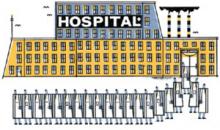Dr. Weinstein has no financial relationships relevant to this article.
“I CAN’T GET NO SATISFACTION”—Mick Jagger and Keith Richards, 1965
“FOR THE TIMES THEY ARE A-CHANGIN’”—Bob Dylan, 1964
The lyrics of two songs written more than 40 years ago are an excellent way to describe today’s physician workforce. Regrettably, many physicians who grew up listening to these performer-philosophers have yet to heed the words of Bob Dylan. Instead, they echo the sentiments of Mick Jagger and Keith Richards without doing much to correct the problem.
Why the decline in work satisfaction? Many reasons have been cited, including:
- loss of autonomy
- economic pressures
- an increasing degree of government and insurer control over practice
- the liability crisis
- a divergence between professional and personal expectations
- physicians’ own high career expectations
- a desire for more time for family and self.1
The growing level of dissatisfaction with the practice of medicine has, clearly, reached crisis level: Twenty percent of all physicians report that they are dissatisfied with their career.2,3 And lack of fulfillment appears to be developing much earlier in the life of a physician than has so far been appreciated. Not only is it showing up in residents, job dissatisfaction is evident even among medical students. It is quite revealing—and depressing—that 40% of young physicians would choose not to go to medical school if they had to choose again.
In this article, I examine the characteristics of the dissatisfied physician, explain the apparent reasons for this lack of fulfillment, and propose a number of steps that can be taken to salvage the situation, lengthen the time that a physician works, on average, and add flexibility and variety to work life.
Ultimate effect of dissatisfaction? Loss of a physician
An unhappy physician is two or three times more likely to leave the profession or decrease the number of hours worked than a satisfied physician is.4 And when a physician leaves the workforce, we lose a valuable resource. The estimated replacement cost for a physician in 1992 to 1999 dollars was $250,000, and that cost is at least 50% higher today.5,6 Besides the monetary loss, there is disruption to other members of the practice group and to patients when a physician leaves the profession.
Landon and colleagues found that the average age of a physician working full-time was 47 years, compared with 53 years for a physician who was working fewer than 20 hours a week and 63 years for a physician at retirement.4 However, these data are approximately 7 years old; current figures are likely to show curtailment of work hours at even younger ages.
It is not realistic to expect that 1) the educational system will increase medical school class size and 2) enough physicians will finish training and develop a mature practice in the time necessary to offset the number of physicians now altering their workloads or exiting the workforce.
Does gender influence the satisfaction rate?
The profession of medicine has changed strikingly over the past 20 years. Once male-dominated, it now is gender-equal and, in some specialties, female-dominated.
This rapid gender shift in medicine has received much of the blame for the decline in physician satisfaction. However, data suggest that, among full-time academic faculty who do not have children, productivity and career satisfaction are the same for women as for men.7 A recent study of internists found few gender differences in work-life balance, work hours, and attitudes toward patient care.8
Among surgeons, an equal percentage of each gender believes that the work schedule leaves too little time for personal and family life.9 Although it has been suggested that women prefer to work fewer hours than men, evidence indicates that younger men have the same desire to work less and spend more time with family.10
That said, there are some gender-related differences in medical workforce characteristics:
- Women reduce their clinical activity during childbearing and childrearing and retire 5.5 years earlier than men do4
- In obstetrics, women younger than 40 years are four times more likely to reduce work hours or completely stop practice than male obstetricians are11
- Among surgeons, 90% of women live in dual-career households, compared with 50% of men9
- When the surgeon is male, children are cared for by spouses in 63% of households; when the surgeon is female, children are cared for by an employee in 88% of households9
- Among surgical subspecialists, women are more likely to be divorced or separated and to have fewer or no children; 34% spend 21 to 40 hours weekly on household management.12


